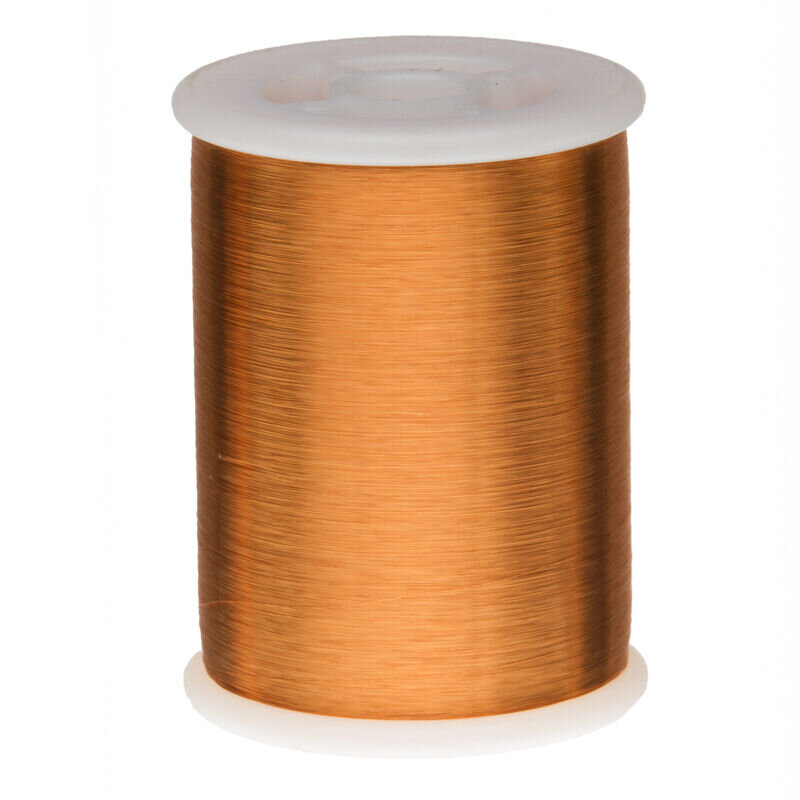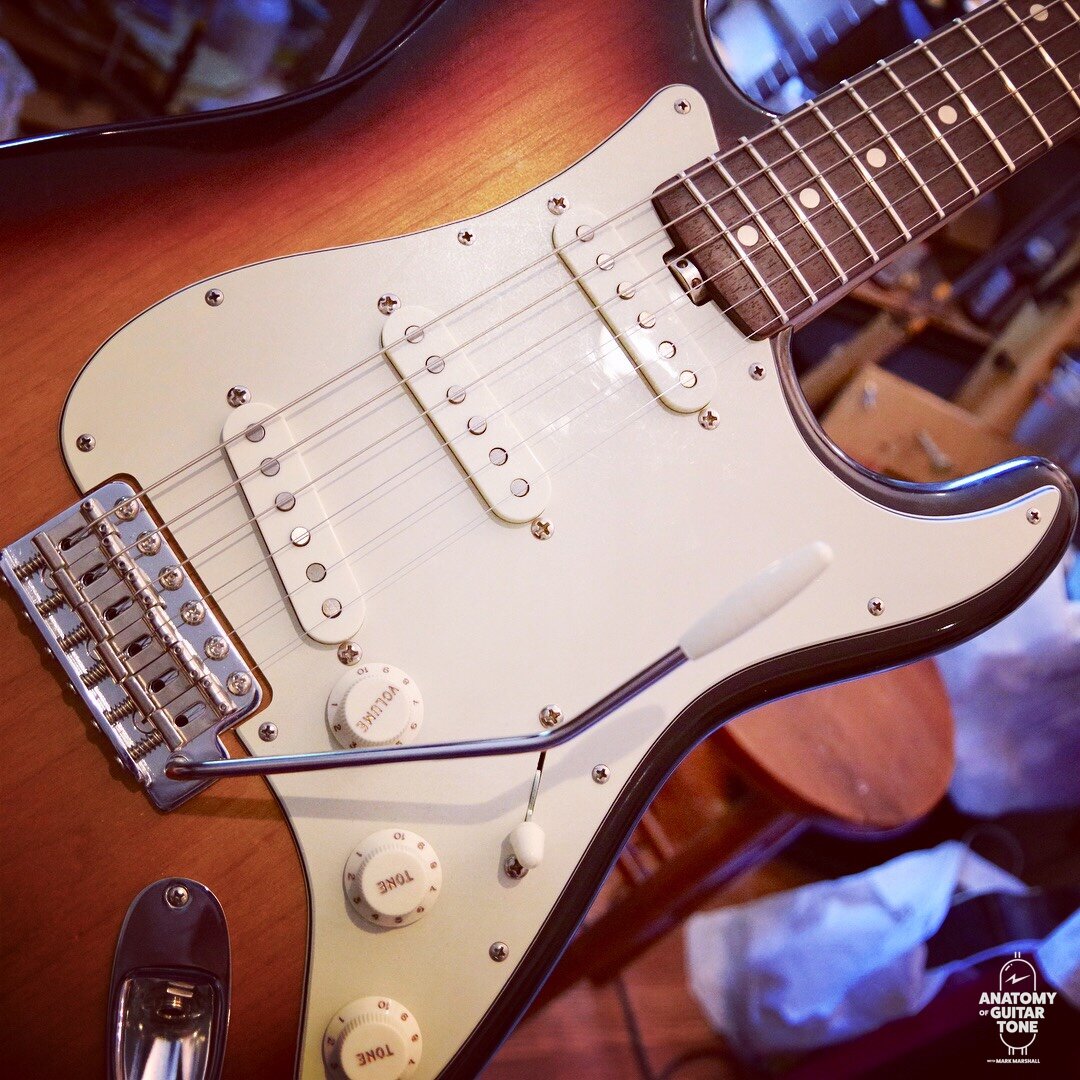FSC 1960’s Strat Pickups
I recently wrote a blog about FSC Instruments '59 pickups. Well, I liked them so much I decided to ask Farhad Soheili to make me a set of 1960's style pickups. I have two Strats and thought it would be cool if they were both voiced differently.
Because I do so many sessions, small variances in tone can make a big difference. Plus, let's admit it, I'm a tone nerd.
Formvar Wire
The difference between the 50s and the 60s Fender pickups is the wire used to wind them. The 50s period of Fender wire was formvar. While the 60s was enamel, it seems like such a subtle detail for the drastic tone difference. The 59's and the 60's pickups are about the same output but sound considerably different.
Enamel Wire
Vintage-style pickups are less muddy then modern high output designs. This is the case for both the 59's and the 60's. However, the '60s are even a little more mid-range scooped.
The stock CNC would pickups on my 1991 American Strat were a little muddy and dull sounding. I wouldn't say they weren't useable. I made music on that guitar for 28 years.
But, the 60's pickups open up the guitar. And it's not just about its interaction with the amp. Fuzz pedals sound different. Think about it, those coveted fuzz pedals from the '60s like the Tonebender, Fuzz Face, Maestro FZ-1 were all designed and tested with vintage pickups.
That means lower output and less muddy pickups. Sometimes people's reaction to fuzz is it's too bassy. I'm not going to say that fuzz doesn't sound too bassy or buzzy sometimes with vintage pickups, but in general, the fuzz is more defined.
FSC 60s Pickups
It's my opinion for vintage fuzz tones; you don't want the highest output pickups for classic sounds. It's not the kind of interaction vintage fuzz pedals were designed to see. It doesn't mean it will sound wrong. It just won't sound period correct.
Plugging my FSC 60's loaded sunburst strat into a LIC Tonebender MKI reminds me so much of the sounds I grew up hearing. They play well together. It's not like we lose a ton of sustain when using lower output pickups. There is just more clarity and definition to the fuzz tone.
Articulation
One big advantage of using hand-wound/scattered pickups is touch sensitivity. It's quite wild how much articulation you lose with CNC wound pickups. I get reminded every time I swap out some pickups on a guitar that I've been playing for years.
I hear that particular guitar in a new way. A light bulb goes off. I had this same experience when I brought home my sunburst strat with FSC 60's pickups.
All the soft notes I hit were not only audible but clear as day. It felt like I had complete control over my quietest moments. With the stock pickups, I always felt like my softest range was holding on for dear life, kind of like the youngest of 6 siblings.
Jimi Hendrix playing a late 60s Stratocaster
There are recordings of Jimi Hendrix where the articulation of his notes at his lightest playing felt right in front of you. It was a one on one conversation as opposed to getting changed in a locker room.
That feeling remains whether you're playing with fuzz, overdrive, or various amps. Although this is also a trait, I associate with hand-wired guitar amps. That's a conversation for another time, though.
Vintage wiring
The wiring from the 1950s and 1960's Stratocasters are a little different from most of the Strats we see off the line these days. Nowadays, when you get handed a new Strat, the second tone knob will be connected to the bridge pickup.
FSC ST-M guitar
The '50s and 60's wiring doesn't have the tone knob connected to the bridge pickup. It's routed to the 2nd, 3rd, and 4th position of the pickup selector instead.
As a side note, it's worth mentioning that Strats from this period had a three-way pickup selector: neck, middle, and bridge.
On a vintage Strat, the bridge pickup has no tone control. Not having a bridge tone control threw me at first. Even though I have several Fenders, I haven't had any of them wired to vintage spec.
Cap
Since my sunburst Fender American Standard Strat was being opened up, I also decided to change the cap. I'm one of those annoying people that hear the differences in caps. You should listen to my conversations at parties.
FSC 60s Pickups
On my Blue American Strat, I used a NOS cap from the '60s. For the sunburst Strat, I wanted to try something modern made to vintage spec. Farhad uses the Sonny Walton Reproduction "Phonebook" .1 uF 150v. In his ST-M model. I liked the tone on his Strat-style guitar. So I decided to order a few to try.
I like the "Phonebook" caps. Some may say they are a little darker than some other caps. There is some truth in that statement. However, it can be a bit misleading. When people hear dark, they often think muddy. I don't hear them as murky, instead, as a more gentle roll-off. The "dark" doesn't lack definition. It's more like the roll-off we all like about recording to tape.
Amp
These examples were recorded using a Headstrong Lil King Reverb, which is a Blackface Princeton circuit. Generally, if you would have handed me a 60's era mid-scooped Strat to plug into a Blackface amp, I would politely decline.
Late 60’s Fender Stratocaster
I like the midrange. What can I say? So I tend not to pair two devices that have midrange on a curfew. But, when you play a set of pickups that are wound period correct to the '60s with an amp that is authentic to the '60s, something amazing happens. They sound incredible together!
The pickup and amp pairing shouldn't be a shocker. After all, Leo Fender was developing all this gear. It's like an instant transport to the mid-sixties (lava lamp sold separately).
I also found the FSC 60's pickups and Headstrong Lil King to work together at all volumes. I'm about to publicly state that I was happily playing perfectly clean into a Blackface amp at low volumes. I didn't need to turn it up; add a fuzz, overdrive, or compressor.
There is a recipe for capturing classic tones. If you're into the Ventures, 1950's style pickups into a tube spring reverb into a brownface era Fender amp with harmonic tremolo.
If you're into the Hendrix tone, you'll want a Strat with 1960's pickups into a germanium fuzz face into a Marshall Plexi.
Let's listen to some examples:














